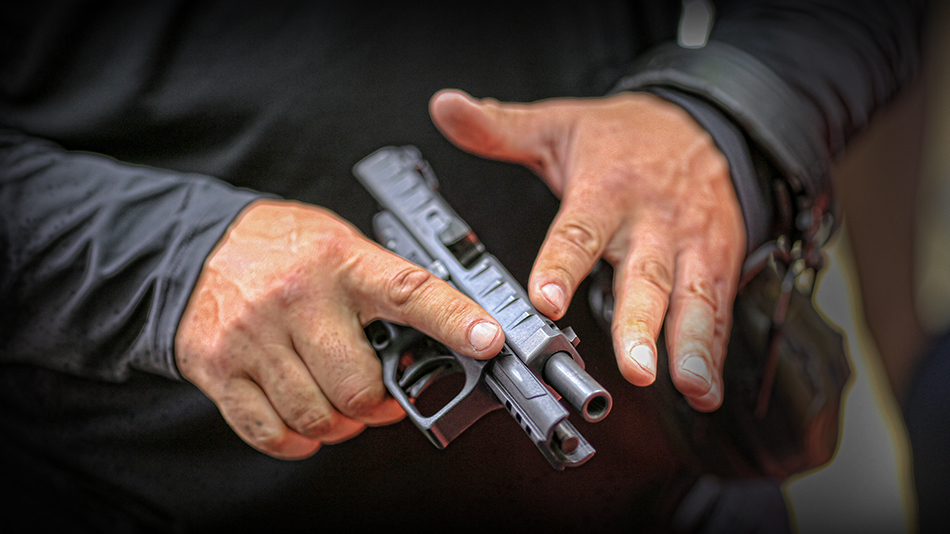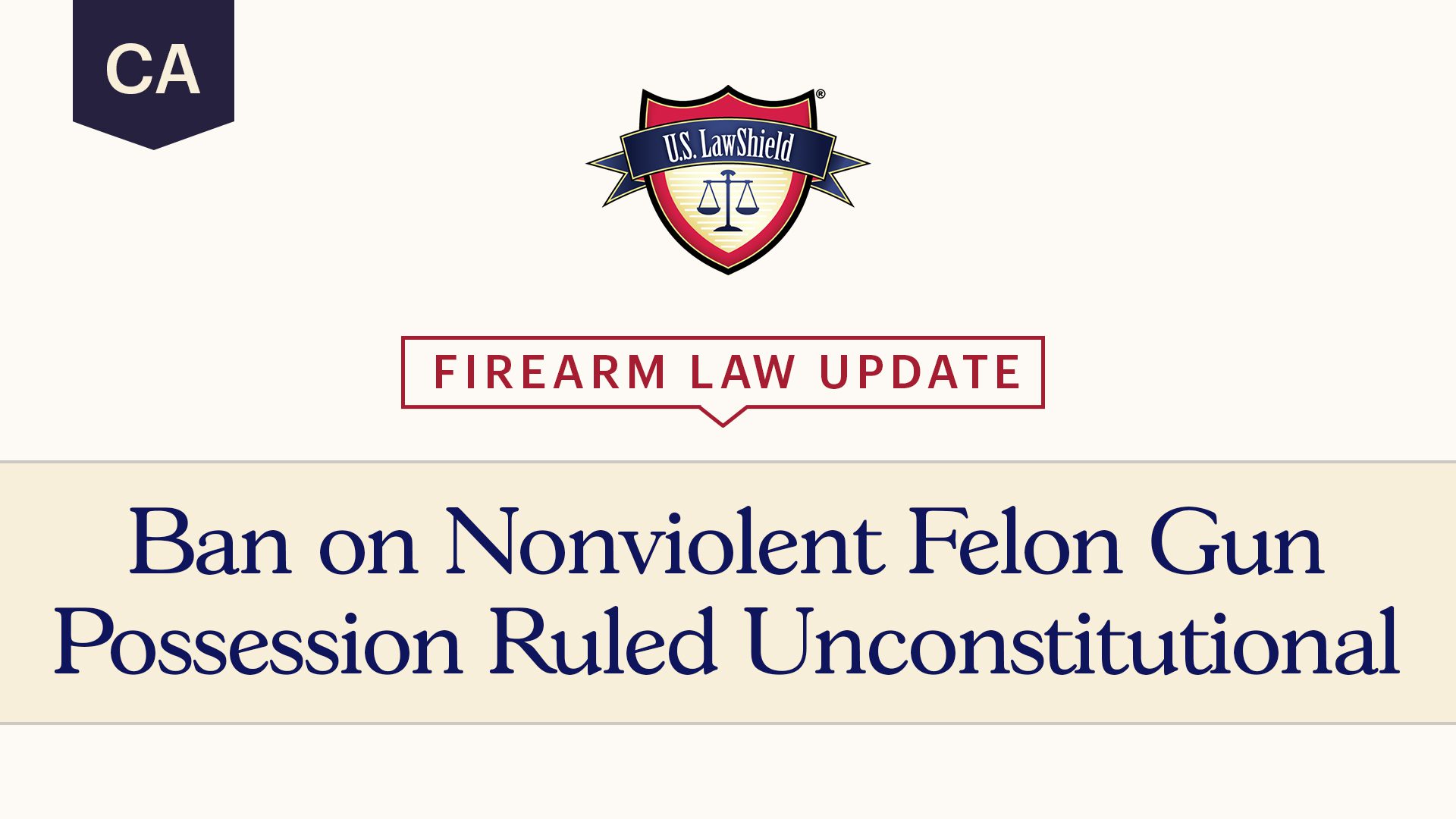
As a firearms owner, gun safety should be your top priority at all times. It does not matter if you own your gun for home defense, use it as an everyday carry (EDC), or only use it to hunt. Being safe is the responsibility of every gun owner. Sometimes it seems overwhelming, especially for those new to the gun world, because certain organizations push three rules while others say there are seven or more. We’re going to fill you in on four golden rules and offer some extra safety tips to further your firearms education.
What Are the 4 Rules of Gun Safety?
Although there is no magic number, there are basic gun safety rules that are widely respected, and important to know. They are as follows:
- All guns are always loaded.
- Never let the muzzle cover anything which you are not willing to destroy.
- Keep your finger off the trigger until your sights are on the target.
- Always be sure of your target and beyond.
Enjoying this content? Find out how you can get more essential updates and self-defense information just like this sent straight to your inbox.
These safety rules—which are good ones to memorize and follow—were first articulated by the late Colonel Jeff Cooper and are taught at the famed Gunsite Academy in Paulden, Arizona. Let’s talk about what these rules mean and how to apply them to the ownership and use of your gun.
The first rule of safe gun handling is that all guns are always loaded. What this means is that you should treat all guns as if they are always loaded. It doesn’t matter if your mom, dad, husband, wife, or best friend handed you the gun and told you it’s unloaded. Always confirm the gun’s status on your own by both look and touch. Don’t simply trust your eyes when looking into the chamber; sweep the chamber with your pinkie finger to confirm by feel whether or not there’s a round present. Once you’ve confirmed the gun does not have a round chambered, does that mean you can handle the gun however you please? No, it does not. It just means there is not a live round chambered; it does not mean you can be lazy in your treatment of the gun or feel free to aim it wherever you want. This rule also means not participating in dangerous behaviors, such as looking directly down the barrel of a gun to check for an obstruction. Abide by all four gun safety rules and continue to treat all guns as though they are always loaded. Guns are tools, not toys, and should be treated with respect.
Another way of phrasing the second rule of gun safety is to never allow the muzzle of your gun to aim at something you are not willing to destroy (or kill). “Destroy” is typically used because it applies to inanimate objects too; do you want to put a hole in the wall of your home or through the door of your truck? The muzzle of your gun must always be aimed in a safe direction. It should not cover, or aim at, your hand, your friend’s hand, or the torso of the guy down the firing line. What is a safe direction? It’s one that would end without injury or destruction if the gun fired. And, like all four gun safety rules, it is a part of a greater whole.
Your finger should not touch the trigger of your gun until you are on target. Contact with the trigger when you are not on target could result in a negligent discharge. If you’re a hunter, don’t sit in the blind and “play” with the trigger as you wait because that is not remotely wise or safe behavior. Pulling the trigger to “prove” the gun is empty is also a bad idea; if you do it, you’re creating a safety hazard and probably going to have a bad time. The trigger is off limits until your gun is on target, whether it’s paper, steel, or a game animal. At all other times, if the gun is in your hands, your trigger finger should be indexed high on the frame of the gun. Someone standing off to one side should see daylight through the trigger guard, not your hand or finger. Leaving your finger technically off the trigger, but resting or hovering over it on the trigger guard, is also a violation of the safety rule.
When it comes to knowing your target, there are more details to consider. Not only must you know exactly what your target is, but you have to be aware of what is around and behind it. Paper targets on a range rest in front of a berm for a reason—so you have a safe backstop—and when you’re out hunting, you must know what lies beyond the animal you want to shoot. This also applies to instances of self-defense. You are responsible for every bullet that leaves your gun, so you need to pay attention to what is near and beyond your target at all times, even during high-stress situations. It is also important to note you can and will be held accountable for every bullet fired and what it strikes.
What Other Gun Safety Rules Should I Know?
There are quite a few other concepts and practices that are beneficial to understand and follow. For the sake of space, we’ll keep it limited to a handful of extras.
Reduce administrative handling. When you hear an experienced shooter mention the need to refrain from administrative handling of your firearm, they are talking about the fact you should not handle your gun unless necessary and in a proper manner. Fiddling with it in its holster, taking it off and on when you do not truly need to do so, and otherwise touching it when you could avoid touching it is unwise. Administrative handling scenarios are when negligent discharges may happen. You will have to handle your gun to clean it, transport it, and train with it; but once again you must remember it is a tool, not a toy.
Store guns safely. Safe storage is an important part of being a responsible gun owner, and can also be mandated by law. See e.g., Colo. Rev. Stat. § 18-12-114. If your gun is not in your direct control or in use, it is a good idea to store it in a good quality safe. Do not leave your gun accessible to people who should not be touching it.
Avoid being conspicuous. To avoid unwanted attention from other individuals, potential threats, or even law enforcement, your goal should be to blend in rather than intentionally standing out. When you do things like act abnormally or wear clothing that makes you stand out as a potential gun owner, you draw attention to yourself. From a tactical and self-defense standpoint that is not something you want. The importance of maintaining a low profile is also referred to by some as the gray man concept.
Transport firearms safely
Regardless of whether you’re flying or driving, you need to be familiar with the laws regarding firearms transportation in your area and the location where you intend to travel. It is also a good idea to familiarize yourself with any jurisdiction you intend to travel through. In addition, consider having locking cases—hard or soft—to use when driving guns from one location to another even when it is not required by your local laws. Even if you do not plan any stops along the way, it keeps your guns covered and away from prying eyes.
Learn to carry safely
If you’re going to lawfully carry your gun for self-defense purposes, it is your responsibility to properly do so, take the steps necessary to abide by local laws, and be smart about it. Use a quality holster that offers good retention and holds the firearm properly against your body, wear a sturdy gun belt, and practice with your chosen carry method. Understand not all carry methods, holsters, and belts are made equal and you’ll have to get training and do some research to find out what is safe and works well for your specific needs and skill level.
Use hearing protection
Taking care of your hearing is part of being a responsible gun owner. Wear ear protection that is rated for firearms use every time you shoot. Even hunters would be wise to wear it. A great way to handle the loud noises created by shooting is to invest in a suppressor so that you reap the benefits of hearing protection while also providing you with the ability to leave your ears uncovered so you can easily hear what is going on around you. Please note, however, obtaining a suppressor involves extra paperwork and a tax stamp fee because it is an NFA item. Additionally, possessing suppressors or compatible barrels may be unlawful and/or constitute prohibited “assault weapons” in certain states, such as California and New Jersey. See Cal. Penal Code §§ 30515(a), 33410,30600; N.J.S.A. 2C:39-1(g), 2C:39-3(c). It is always important to know the applicable law in your home state and any place you may be visiting.
Wear eye protection
You might think it could never happen to you, but flying brass and fragments of metal are a constant risk to your eyes when you’re shooting. Remember to wear eye protection rated for the potential impacts that can happen while shooting, because a random pair of glasses is not going to provide the necessary protection. There is eye protection on the market made for people who wear prescription lenses that can be worn over your glasses. It is also possible to have shooting glasses made using your prescription.
Insist everyone around you is safe. Teach others to follow the rules and be safe. If someone consistently behaves in a dangerous manner, do not shoot with or around them. This goes for unsafe behavior during a firearms class as well; if someone on the firing line is not being safe—including the instructor—and the problem is not being properly addressed, leave. Your safety comes first.
Follow trainer John Farnam’s rule of three: do not go stupid places with stupid people and do stupid things. Remember, most accidents can be avoided by thinking ahead and following the four gun safety rules.
Your Protection Starts Here!
BECOME A MEMBERThe information provided in this publication is intended to provide general information to individuals and is not legal advice. The information included in this publication may not be quoted or referred to in any other publication without the prior written consent of U.S. LawShield, to be given or withheld at our discretion. The information is not a substitute for, and does not replace the advice or representation of a licensed attorney. We strive to ensure the information included in this publication is accurate and current, however, no claim is made to the accuracy of the information and we are not responsible for any consequences that may result from the use of information in this publication. The use of this publication does not create an attorney-client relationship between U.S. LawShield, any independent program attorney, and any individual.





Thank you for explaining the importance of hearing safety. I’ve been wondering what kinds of things I should bring to the firing range. I’ll pick some up on my way over to meet my dad.